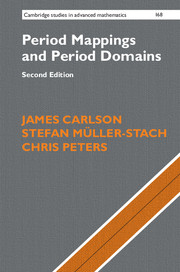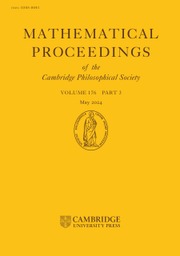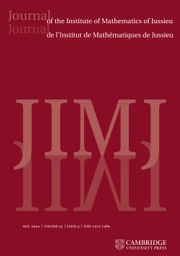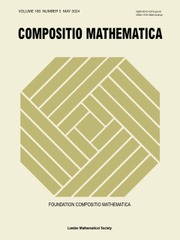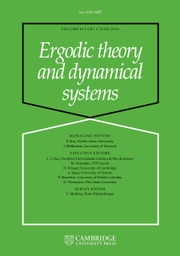Period Mappings and Period Domains
2nd Edition
Part of Cambridge Studies in Advanced Mathematics
- Authors:
- James Carlson, University of Utah
- Stefan Müller-Stach, Johannes Gutenberg Universität Mainz, Germany
- Chris Peters, Université Grenoble Alpes, France
- Date Published: September 2017
- availability: This ISBN is for an eBook version which is distributed on our behalf by a third party.
- format: Adobe eBook Reader
- isbn: 9781108118989
Find out more about Cambridge eBooks
Adobe eBook Reader
Other available formats:
Paperback, Hardback
Looking for an inspection copy?
Please email [email protected] to enquire about an inspection copy of this book
-
This up-to-date introduction to Griffiths' theory of period maps and period domains focusses on algebraic, group-theoretic and differential geometric aspects. Starting with an explanation of Griffiths' basic theory, the authors go on to introduce spectral sequences and Koszul complexes that are used to derive results about cycles on higher-dimensional algebraic varieties such as the Noether–Lefschetz theorem and Nori's theorem. They explain differential geometric methods, leading up to proofs of Arakelov-type theorems, the theorem of the fixed part and the rigidity theorem. They also use Higgs bundles and harmonic maps to prove the striking result that not all compact quotients of period domains are Kähler. This thoroughly revised second edition includes a new third part covering important recent developments, in which the group-theoretic approach to Hodge structures is explained, leading to Mumford–Tate groups and their associated domains, the Mumford–Tate varieties and generalizations of Shimura varieties.
Read more- A completely revised and up-to-date new edition, covering all major new developments in the field
- Accessible to graduate students with modest backgrounds in algebraic topology and algebra
- Begins by providing a comprehensive introduction to the basic theory as developed by Griffiths
Reviews & endorsements
Review of previous edition: 'This book, dedicated to Philip Griffiths, provides an excellent introduction to the study of periods of algebraic integrals and their applications to complex algebraic geometry. In addition to the clarity of the presentation and the wealth of information, this book also contains numerous problems which render it ideal for use in a graduate course in Hodge theory.' Mathematical Reviews
See more reviewsReview of previous edition: '… generally more informal and differential-geometric in its approach, which will appeal to many readers … the book is a useful introduction to Carlos Simpson's deep analysis of the fundamental groups of compact Kähler manifolds using harmonic maps and Higgs bundles.' Burt Totaro, University of Cambridge
'This monograph provides an excellent introduction to Hodge theory and its applications to complex algebraic geometry.' Gregory Pearlstein, Nieuw Archief voor Weskunde
Customer reviews
Not yet reviewed
Be the first to review
Review was not posted due to profanity
×Product details
- Edition: 2nd Edition
- Date Published: September 2017
- format: Adobe eBook Reader
- isbn: 9781108118989
- contains: 35 b/w illus. 3 tables 180 exercises
- availability: This ISBN is for an eBook version which is distributed on our behalf by a third party.
Table of Contents
Part I. Basic Theory:
1. Introductory examples
2. Cohomology of compact Kähler manifolds
3. Holomorphic invariants and cohomology
4. Cohomology of manifolds varying in a family
5. Period maps looked at infinitesimally
Part II. Algebraic Methods:
6. Spectral sequences
7. Koszul complexes and some applications
8. Torelli theorems
9. Normal functions and their applications
10. Applications to algebraic cycles: Nori's theorem
Part III. Differential Geometric Aspects:
11. Further differential geometric tools
12. Structure of period domains
13. Curvature estimates and applications
14. Harmonic maps and Hodge theory
Part IV. Additional Topics:
15. Hodge structures and algebraic groups
16. Mumford–Tate domains
17. Hodge loci and special subvarieties
Appendix A. Projective varieties and complex manifolds
Appendix B. Homology and cohomology
Appendix C. Vector bundles and Chern classes
Appendix D. Lie groups and algebraic groups
References
Index.
Sorry, this resource is locked
Please register or sign in to request access. If you are having problems accessing these resources please email [email protected]
Register Sign in» Proceed
You are now leaving the Cambridge University Press website. Your eBook purchase and download will be completed by our partner www.ebooks.com. Please see the permission section of the www.ebooks.com catalogue page for details of the print & copy limits on our eBooks.
Continue ×Are you sure you want to delete your account?
This cannot be undone.
Thank you for your feedback which will help us improve our service.
If you requested a response, we will make sure to get back to you shortly.
×
